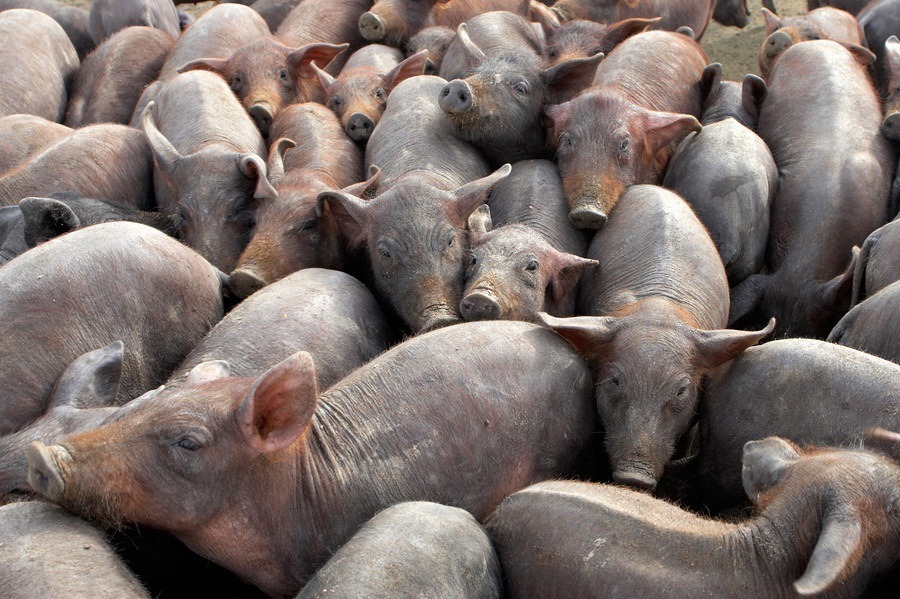New Development in Antibiotic Resistance
A new study came out on Tuesday that investigates the way antibiotic resistance spreads on pig farms, and beyond. What did they find? Well, let’s just say that what happens on the pig farm doesn’t necessarily stay on the pig farm.
The study was led by Michigan State University’s Center for Microbial Ecology, with help from the Chinese Academy of Sciences, and the USDA National Animal Disease Center.
The Abridged Version
Working with pigs from a lab in the US, and pig farms in China, the researchers identified and sequenced 44 genes that are related to antibiotic resistance, and its distribution on pig farms.
What they found is a little alarming, but it shouldn’t be too surprising if you’ve been following along. They found that there is a direct correlation between bacteria that can resist antibiotics, and the ability of those bacteria to spread their resistant traits to other bacteria.
In other words, the bacteria haven’t only learned to resist antibiotics – they have also learned to spread that resistance to their neighbors.
New Insights into Multidrug Resistance
On a pig farm, there is a rich and dense population of pig bacteria. That’s not a bad thing in and of itself. The same could be said for a large, centralized population of any other living thing – including humans.
When any particular antibiotic is used, bacteria can develop resistance to it. So it stands to reason that bacteria may be resistant to antibiotics they have seen before, but they should be susceptible to antibiotics they have not seen before.
This study shows that it’s not that simple. When one antibiotic is used, resistance to many antibiotics can increase. The study identified single genes that lend resistance to 6 classes of antibiotics.
Learn More About Your Biome: Microbes 2.0 – A Tiny Manifesto
Resistant Bacterial gone “Viral”
When multidrug resistance does develop, it can be passed between unrelated bacteria using a process known as horizontal gene transfer.
While science has been aware of the problem of antibiotic-resistant bacteria, and the concept of horizontal gene transfer, before now – this new research shows a direct link between the two.
As a result, when one bacterium develops resistance to one drug, you can end up with a community of unrelated bacteria that possess resistance to many drugs.
The study’s authors go so far as to say that “multidrug-resistant bacteria are likely the norm rather than the exception in these communities.”
There Goes the Neighborhood
Now for the really interesting part!
They also looked at soil from Chinese vegetable farms that use manure-based fertilizer. In the fertilized soil, they found completely different bacteria than they found on the pig farm – as you would expect.
But the completely different bacteria in the soil did possess the same multidrug-resistant genes that they found on the pig farm. Yikes!
According to Yongguan Zhu, co-author from the Chinese Academy of Science, “This indicates that on the Chinese farms, the potential for resistance gene transfer among environmental bacteria is likely.” So, what happens on the pig farm does not stay on the pig farm.
Read more about antimicrobial resistance: Antimicrobial Resistance in the News
The Bottom Line for the Biome
Slowly but surely, the scientific community is arriving at the realization that antibiotics in the food supply, and antibiotic misuse in general, are a direct threat to human welfare.
As soon as the problem of antibiotic resistance began popping up in hospitals around the world, there was a call to separate the antibiotics that are used for animals from the antibiotics that are used in human medicine. Some people believed that if we reserved certain antibiotics for human use only, we could keep antibiotic-resistance confined to the farm.
No such luck. The use of one antibiotic in either location – the farm or the hospital – can result in bacteria that are resistant to multiple drugs, and that resistance can probably be passed from one bacteria to another unrelated bacteria, in real time, across environmental barriers.
So what’s next? The authors of this study suggest that we need to monitor and manage known genetic pools of antibiotic resistance. And we need to begin reducing the presence of resistant genes on farms – which means cutting out the antibiotics.

paul-wheaton-6-ways-to-keep-chickens
Sources:
1: Antibiotic resistance genes increasing – http://msutoday.msu.edu/news/2016/antibiotic-resistance-genes-increasing/
2: Clusters of Antibiotic Resistance Genes Enriched Together Stay Together in Swine Agriculture – http://mbio.asm.org/content/7/2/e02214-15








COMMENTS(6)
Glyphosate (RoundUp) is patented as an antibiotic , so it’s not only doing its thing in the soil, it’s also doing it’s thing in our bodies when we eat it through GMO food products such as corn fructose etc. I just found out today it is also a chelator, which removes magnesium beyond the capacity of the body to access it. Lovely stuff. When are the politicians and justice system, paid for by the public and who are supposed to be protecting their constituents from the evil that corporations do, going to start doing their job instead of protecting the corporations from the public and from any responsibility?
Great story, but you missed the most important part, CAFO’s are the cause of all this. RAISE those pigs on pasture and finish them on acorns, and problem solved. No need for antibiotics if you raise them properly.
Good article and comment on glysophate being patented as a antibiotic. What are these people doing to us but it is up to us to stop the chain reaction. Thank you.
Check out the anti-bacterial and anti-viral claims made about Silver and how the Medical establishment is utilizing silver more these days. “Born with a silver spoon in his mouth” means more than someone having wealthy parents.